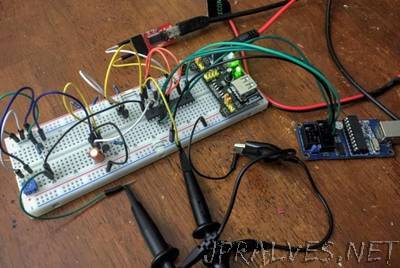
“I recently had the need to carefully measure a voltage with a microcontroller which lacks an analog-to-digital converter (ADC), and I hacked together a quick and dirty method to do just this using a comparator, two transistors, and a few passives. The purpose of this project is to make a crystal oven controller at absolute minimal cost with minimal complexity. Absolute voltage accuracy is not of high concern (i.e., holding temperature to 50.00 C) but precision is the primary goal (i.e., hold it within 0.01 C of an arbitrary target I set somewhere around 50 C). Voltage measurement is usually a balance of a few factors: precision, accuracy, cost, simplicity, and speed. The method I demonstrate here maximizes precision and simplicity while minimizing cost. High speed operation is not of interest (1-2 measurements per second is fine), and as mentioned before accuracy is not a chief concern as long as precision is maximized. I would feel neglectful if I didn’t give a shout out to a few alternatives to this method: Using the 10-bit ADC built into most AVR microcontrollers (my go-to for ATMega328 at ATTiny85, but the ATTiny2313 doesn’t have any) often combined with an op-amp like this, using an IC like the MCP3208 8-channel 12-bit ADC (very expensive at $3.66 on mouser) are a good option, and fancy alternative dual slope methods as described in this really good youtube video and even mentioned nicely in the digital volt meter (DVM) / LCD driver ICL1706 datasheet. Those addressed, my quick and dirty idea uses only a couple cents of components and 3 pins of a microcontroller. There is much room for improvement (see my notes about a 555 timer, voltage reference, and operational amplifiers at the bottom) but this is a good minimal case starting point. This type of measurement is perfect for high precision temperature measuring using things like an LM335, LM35, or thermistor.”
